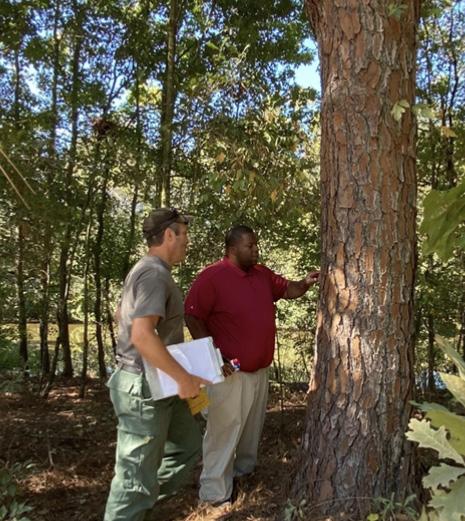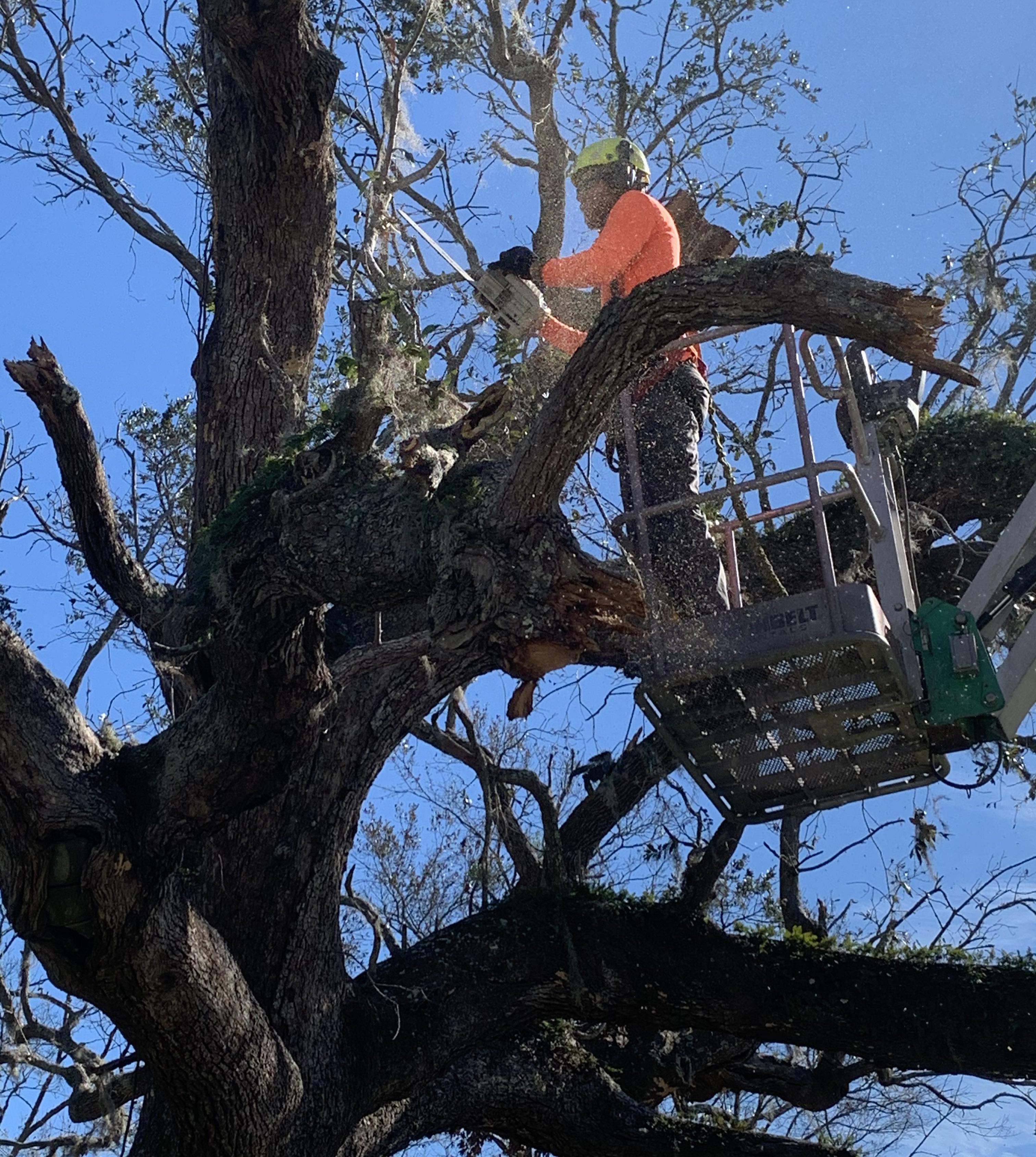
3 minute read
Black turpentine beetle
by Brian Watkins, Louisiana Director
While many have been amazed by the progress going on at BREC’s Baton Rouge Zoo, a tree pest has made its way into BREC’s urban forest.
BREC is the agency that connects people to parks and nature in East Baton Rouge Parish with a system that has more than 170 parks including a unique mix of facilities that mirror the history and rich natural resources in south Louisiana. This includes a stateof-the-art observatory, swamp nature center located in the urban core, equestrian park, zoo, performing arts theatre, arboretum, botanical garden, a water park with the only surfing simulator in the state, golf courses throughout the parish, and an expansive 30,000-foot concrete extreme sports park. Throughout its history, BREC has taken seriously its responsibility to improve the health, safety, environment, and quality of life for all citizens.
In October 2022, frequent, park users noticed that pine trees were quickly turning color; Pine trees that once stood tall and green were starting to turn brown. They snapped pictures and shared it to BREC’s social media page. A few days later, I went out to assess the pine trees and noticed that multiple trees in BREC’s Baton Rouge Zoo and Greenwood Community Park were affected. I immediately thought southern pine beetle but then remembered that southern pine beetle like large stands of pine trees, not just four or five. After noticing small holes near the bottom of the trunk, I contacted the Louisiana Department of Agriculture and Forestry and had our Parish Forester come and look. He took samples and found one of the insects in the tree.
The black turpentine beetle, Dendroctonus terebrans (Olivier), or BTB, is one of five common species of pine bark beetles in the southeastern U.S. BTBs bore into the inner bark of stressed or injured pines (Pinus spp.), where they breed and feed on phloem tissue. Adults are strongly attracted to volatile pine odors and readily breed in fresh stumps. Attacks on standing trees usually occur on the lower 1-2 m of the trunk or on large roots. Light attacks may kill only localized sections of phloem tissue, but numerous attacks per stem result in tree mortality. Attacks from BTBs may occur on all pines native to the South. It is most common in pines stressed by serious drought, flooding, storms, wildfires, cutting operations, and construction. Use of mechanized harvesting equipment, which damages residual trees, compacts the soil, and injures the roots, has increased damage by black turpentine beetles (entnemdept.ufl.edu).
Distribution
BTB is found throughout the eastern U.S. from coastal New Hampshire south through Florida and west to Texas and Missouri. It is an interesting distribution since the BTB occupies the part of the continent not occupied by the much more widespread red turpentine beetle (Dendroctonus valens LeConte). The red turpentine beetle is very similar in appearance and behavior and occurs from Alaska to Mexico and eastward to New England, but does not occur in the southeastern U.S. The two species co-occur only in a narrow zone where their ranges overlap.
Identification
The adult beetle is ¼” to 3/8” long and dark brown or black. This beetle may be confused with Ips bark beetles, but is larger, more heavily bodied, and does not have a scooped out and spined posterior. Creamy white larvae are very small with a reddish-brown head and are approximately 1/3” long. The yellowish-white pupae are about ¼” in length (tfsweb.tamu.edu).
Detection
Signs and symptoms of BTB attack include: n large (2-5 cm wide) pinkish-white, reddish-brown, or purplishgray pitch tubes on the lower bole of the tree, which may exhibit an entrance hole 3-5 mm wide n reddish-brown boring dust n accumulations of crystallized pitch pellets on the ground at the base of the tree n large vertical or fan-shaped galleries in the inner bark n the entire tree crown gradually fading from green to yellow to red to brown
Preventative strategies for urban and residential landscape pines: n avoid compaction of physical damage to or pavement over the root zones of pines; n avoid trunk wounds; n provide adequate spacing (4-6 m) between trees; n minimize competing vegetation beneath pines; n maintain proper soil nutrient status through an acidic needle or pine bark mulch over the root zone, and by not routinely watering turf grasses beneath pines; and n provide supplemental deep watering during extended drought periods.
BREC’s forestry team has removed 20 pine trees, and continues to get emails about new ones weekly. BREC is working on treating all pine trees and removing the trees that are dead/dying. We will continue to put information out to residents and other governmental entities so everyone is keeping their eyes on this pest. This will also help everyone become proactive instead of reactive.










